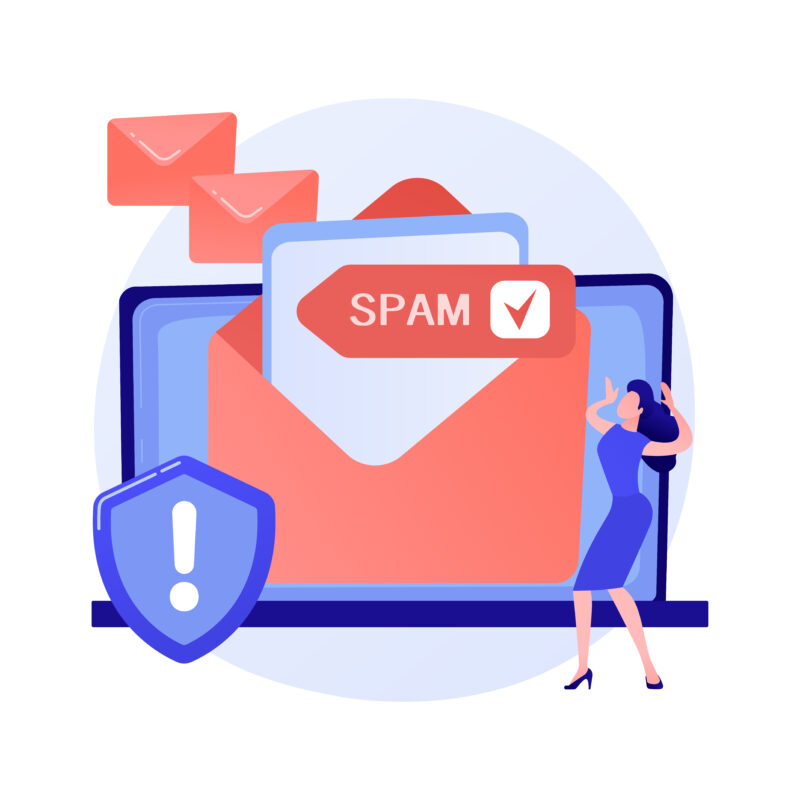In the dynamic field of B2B marketing, understanding key metrics and applying them effectively allows businesses to gain a competitive edge. At the heart of these metrics are GTM (Go-to-Market), CAC (Customer Acquisition Cost), and LTV (Lifetime Value). Harnessing the potential of these three principles can empower a B2B marketer to maximize their marketing strategies, shaping the landscape of their business growth and sustainability.
Understanding Key Business Metrics: GTM, CAC, and LTV
The potency of B2B marketing strategies can largely be attributed to the effective use of crucial business metrics. Among these, GTM, CAC, and LTV carry significant weight. However, to truly unlock their potential, one must first understand what these metrics represent and why they matter.
What is GTM (Go-to-Market)?
Go-to-Market (GTM) refers to a business’s plan to deliver its products or services to the market. A well-crafted GTM strategy focuses on understanding the target customer, market segmentation, and the unique value proposition of the product or service being offered. It’s a blueprint for how a company will attract, acquire, and retain customers.
When developing a GTM strategy, businesses must carefully analyze their target market and identify the most effective channels to reach potential customers. This includes considering factors such as demographics, geographical location, and consumer behavior. By understanding the market landscape, businesses can tailor their messaging and positioning to resonate with their target audience, increasing the chances of success.
Furthermore, a comprehensive GTM strategy takes into account the competitive landscape and identifies ways to differentiate the company’s products or services from competitors. This may involve highlighting unique features, offering superior customer service, or implementing innovative pricing strategies. By effectively positioning themselves in the market, businesses can gain a competitive edge and attract a loyal customer base.
Understanding CAC (Customer Acquisition Cost)
The Customer Acquisition Cost (CAC) is a literal translation of how much a company spends to acquire a new customer. It includes costs incurred for marketing and sales, divided by the number of customers added during a given period. Keeping CAC at an optimum level is crucial for maintaining profitability.
Calculating CAC involves analyzing all the expenses associated with acquiring customers, including advertising costs, marketing campaigns, sales team salaries, and any other resources utilized during the customer acquisition process. By tracking and monitoring CAC, businesses can evaluate the effectiveness of their marketing and sales efforts and make data-driven decisions to optimize their strategies.
Reducing CAC requires businesses to focus on improving conversion rates, streamlining marketing and sales processes, and targeting the right customer segments. By identifying the most cost-effective channels and tactics, businesses can allocate their resources more efficiently and achieve a higher return on investment.
The Importance of LTV (Lifetime Value)
Lifetime Value (LTV) is an anticipated net profit attributed to the entire future relationship with a customer. Understanding LTV helps businesses identify significant customer segments and allocate marketing resources more effectively. Maximizing LTV enables companies to grow sustainably.
Calculating LTV involves estimating the average revenue generated from a customer over their entire relationship with the company, taking into account factors such as repeat purchases, upsells, and customer retention. By understanding the value that each customer brings to the business, companies can prioritize their marketing efforts and tailor their messaging to maximize customer lifetime value.
Increasing LTV requires businesses to focus on building strong customer relationships, providing exceptional customer service, and continuously delivering value. By nurturing customer loyalty and encouraging repeat purchases, businesses can not only increase their revenue but also benefit from positive word-of-mouth and referrals, further expanding their customer base.
In conclusion, understanding and effectively utilizing key business metrics such as GTM, CAC, and LTV are essential for B2B companies to thrive in today’s competitive market. By developing a comprehensive GTM strategy, optimizing customer acquisition costs, and maximizing customer lifetime value, businesses can achieve sustainable growth and success.
The Interplay of GTM, CAC, and LTV in B2B Marketing
Having explored what GTM, CAC, and LTV are in isolation, it is now vital to understand how they interplay in a B2B marketing scenario. These three metrics don’t function in silos; instead, they have a symbiotic relationship that drives the overall success of a marketing strategy.
In a B2B marketing scenario, GTM (Go-To-Market) strategies play a crucial role in influencing both CAC (Customer Acquisition Cost) and LTV (Lifetime Value). It is through a well-designed GTM strategy that businesses can effectively reach their target audience and maximize their marketing efforts.
How GTM Strategies Influence CAC and LTV
Effective GTM strategies can positively influence both CAC and LTV. By ensuring a robust and comprehensive GTM strategy, businesses can better target their potential customers, reducing the overall cost of acquisition. Through various marketing channels, such as content marketing, social media advertising, and email campaigns, businesses can reach their target audience more efficiently, resulting in a lower CAC.
Moreover, a well-informed GTM approach can improve customer retention, thereby increasing the LTV. By understanding the needs and pain points of their target customers, businesses can develop tailored solutions and build long-lasting relationships. This customer-centric approach not only increases customer loyalty but also encourages repeat purchases and referrals, ultimately boosting the LTV.
Balancing CAC and LTV for Optimal ROI
The delicate balance between CAC and LTV heavily impacts a company’s ROI (Return on Investment). Businesses need to find the sweet spot where the cost of acquiring new customers doesn’t outweigh the profit expected from their lifetime value. This requires careful analysis and continuous optimization of marketing strategies.
By closely monitoring the CAC and LTV metrics, businesses can identify areas for improvement and make data-driven decisions. For instance, if the CAC is significantly higher than the LTV, it may indicate the need to refine the targeting strategy or explore cost-effective customer acquisition channels. On the other hand, if the LTV is considerably higher than the CAC, businesses may consider investing more in customer retention initiatives to maximize the overall ROI.
Striking the right balance between CAC and LTV is an ongoing process that requires constant evaluation and adjustment. It is essential for businesses to regularly analyze their marketing performance, identify trends, and adapt their strategies accordingly to ensure optimal ROI.
Implementing Effective GTM Strategies in B2B Marketing
With a clear understanding of the interconnectedness of GTM (Go-To-Market), CAC (Customer Acquisition Cost), and LTV (Customer Lifetime Value), the next step is the practical implementation of these concepts into real-life marketing scenarios. Effective GTM strategies can be steep and tricky, but they yield significant rewards when done right.
When implementing a GTM strategy, it is essential to consider various factors that contribute to its success. These factors include identifying target customers, understanding market segmentation, formulating unique selling propositions, and ensuring an effective communication strategy.
Key Elements of a Successful GTM Strategy
Formulating a winning GTM strategy involves multiple crucial elements. Identifying target customers is the first step in understanding who your product or service is best suited for. By conducting market research, analyzing customer demographics, and studying consumer behavior, you can gain valuable insights into your target audience.
Understanding market segmentation is equally important. By dividing your target market into distinct groups based on characteristics such as age, gender, location, and interests, you can tailor your marketing efforts to resonate with each segment effectively.
Formulating unique selling propositions (USPs) is another key element of a successful GTM strategy. Your USPs differentiate your product or service from competitors and highlight the value it brings to customers. By emphasizing these unique qualities, you can attract and retain customers in a crowded market.
In addition to these elements, an effective communication strategy is crucial for a successful GTM strategy. This strategy encompasses various channels, such as advertising, public relations, social media, and content marketing, to reach your target audience effectively. By utilizing the right mix of communication channels, you can amplify your message and increase brand awareness.
Case Study: Successful GTM Strategies in B2B Marketing
To demonstrate the power of an effective GTM strategy, let’s analyze a case study. Company XYZ, a software solutions provider, implemented a robust GTM strategy that led to a significant decrease in their CAC and a marked increase in LTV, resulting in substantial business growth.
Company XYZ began by identifying their target customers, which consisted of small to medium-sized businesses in the technology sector. They conducted in-depth market research to understand the pain points and challenges faced by these businesses, allowing them to tailor their product offerings accordingly.
By understanding market segmentation, Company XYZ was able to create targeted marketing campaigns for different customer segments. They developed personalized messaging that resonated with each segment’s specific needs, positioning themselves as the ideal solution provider.
One of the key elements of Company XYZ’s successful GTM strategy was their unique selling propositions. They focused on highlighting their software’s ease of use, cost-effectiveness, and ability to streamline business operations. By clearly communicating these USPs, they were able to differentiate themselves from competitors and attract customers.
In terms of their communication strategy, Company XYZ leveraged various channels to reach their target audience. They utilized social media platforms, industry-specific forums, and online advertising to create awareness and generate leads. Additionally, they collaborated with industry influencers and thought leaders to establish credibility and increase brand visibility.
As a result of their comprehensive GTM strategy, Company XYZ experienced a significant decrease in their CAC. By effectively targeting their marketing efforts and delivering a compelling message, they were able to acquire customers at a lower cost. Furthermore, their focus on customer satisfaction and retention led to an increase in LTV, as customers continued to benefit from their software solutions.
In conclusion, implementing effective GTM strategies in B2B marketing requires careful consideration of various elements such as target customers, market segmentation, unique selling propositions, and communication strategy. By analyzing case studies like Company XYZ’s success story, businesses can gain valuable insights and inspiration to develop their own winning GTM strategies.
Managing CAC in Your B2B Marketing Strategy
Effective management of Customer Acquisition Cost (CAC) is paramount to the success of any B2B marketing strategy. CAC refers to the cost associated with acquiring a new customer, and finding ways to lower this cost without negatively impacting customer acquisition can significantly boost business profitability.
When it comes to managing CAC, there are several techniques that can be employed. One such technique is improving organic reach. By focusing on enhancing your online presence through search engine optimization (SEO) and content marketing, you can attract potential customers without incurring high advertising costs. This organic approach not only helps lower CAC but also establishes your brand as a thought leader in the industry.
Another technique is optimizing paid campaigns. By carefully analyzing and refining your paid advertising efforts, you can ensure that you are targeting the right audience and maximizing your return on investment (ROI). This involves conducting thorough market research, segmenting your audience, and creating compelling ad copy that resonates with your target customers. By continuously monitoring and optimizing your paid campaigns, you can lower CAC and increase your chances of acquiring valuable customers.
Refining the sales process is also crucial in managing CAC. By streamlining and automating your sales funnel, you can reduce the time and resources required to convert leads into customers. Implementing customer relationship management (CRM) software and leveraging marketing automation tools can help streamline your sales process, allowing you to focus on nurturing leads and closing deals. A well-defined and efficient sales process not only lowers CAC but also improves customer satisfaction and retention.
Case Study: Effective CAC Management in B2B Marketing
A demonstration of these principles in action can be seen in the case of Company ABC. This ambitious startup managed to substantially lower their CAC through diverse and strategic marketing efforts, hence achieving a striking uptick in their profit margin.
Company ABC recognized the importance of improving organic reach and invested in creating high-quality content that addressed the pain points of their target audience. By consistently publishing informative blog posts and engaging social media content, they were able to attract a significant number of potential customers without relying heavily on paid advertising.
In addition to focusing on organic reach, Company ABC optimized their paid campaigns by conducting thorough market research and A/B testing different ad creatives and targeting strategies. By closely monitoring the performance of their campaigns and making data-driven adjustments, they were able to lower their CAC and increase their conversion rates.
Furthermore, Company ABC implemented a CRM system and marketing automation tools to streamline their sales process. By automating repetitive tasks and nurturing leads through personalized email campaigns, they were able to reduce the time and effort required to convert leads into paying customers. This not only improved their efficiency but also contributed to a lower CAC.
In conclusion, managing CAC is a critical aspect of any B2B marketing strategy. By employing techniques such as improving organic reach, optimizing paid campaigns, and refining the sales process, businesses can lower their CAC and improve their profitability. The case of Company ABC serves as a testament to the effectiveness of these strategies in achieving significant results.
Maximizing LTV in Your B2B Marketing Strategy
Focusing solely on acquisition without considering retention can be a big pitfall. Herein lies the importance of maximizing LTV. By focusing on maintaining and enhancing the value derived from each customer, businesses can ensure sustainable and long-term growth.
One key strategy to increase customer LTV is by enhancing customer service. Providing exceptional customer service not only improves customer satisfaction but also fosters loyalty. When customers feel valued and supported, they are more likely to continue doing business with a company, leading to increased LTV.
Another effective strategy to boost customer LTV is investing in customer loyalty programs. These programs incentivize customers to stay engaged with a brand by offering exclusive rewards, discounts, or special offers. By creating a sense of exclusivity and appreciation, businesses can encourage repeat purchases and increase customer lifetime value.
Additionally, businesses can stress the importance of upselling and cross-selling to maximize LTV. Upselling involves persuading customers to purchase a higher-priced product or service, while cross-selling involves offering complementary products or services. By effectively implementing these techniques, businesses can increase the average transaction value and overall LTV of their customers.
Case Study: Successful LTV Maximization in B2B Marketing
Company DEF is an impressive example of this. Their focus on improving customer service led to increased customer retention and consequently a significant increase in their customer LTV, hence fueling their growth story.
Company DEF recognized that providing exceptional customer service not only improves customer satisfaction but also strengthens their relationship with clients. They invested in training their customer service team to be knowledgeable, empathetic, and responsive to customer needs. This resulted in higher customer retention rates as clients felt valued and supported throughout their journey with the company.
In addition to enhancing customer service, Company DEF implemented a customer loyalty program. They offered exclusive discounts and rewards to their loyal customers, creating a sense of appreciation and fostering long-term relationships. This strategy not only incentivized repeat purchases but also encouraged customers to refer their business to others, further expanding the customer base.
Furthermore, Company DEF effectively utilized upselling and cross-selling techniques. By analyzing customer data and understanding their needs, they were able to offer personalized product recommendations and upgrades. This not only increased the average transaction value but also maximized the value derived from each customer, ultimately boosting their LTV.
In conclusion, maximizing LTV in a B2B marketing strategy is crucial for sustainable and long-term growth. By focusing on enhancing customer service, investing in loyalty programs, and implementing upselling and cross-selling techniques, businesses can increase customer satisfaction, retention, and overall LTV. The success story of Company DEF serves as a testament to the effectiveness of these strategies and their impact on business growth.
Measuring Success: Tracking GTM, CAC, and LTV
The success of any marketing strategy lies in its measurement and continuous improvement. Only by tracking the three key metrics GTM, CAC, and LTV can a business assess the performance of their marketing strategy and make necessary tweaks for better results.
Key Performance Indicators for GTM, CAC, and LTV
Each of these three metrics has specific key performance indicators (KPIs). For GTM, these are customer acquisition rate and market share growth. For CAC, it’s the cost per acquisition. And for LTV, it’s customer lifespan, customer churn rate, and customer retention expenditure.
Using Analytics to Monitor and Adjust Your Strategy
Analytics play a crucial role in monitoring and adjusting marketing strategies. By monitoring changes in GTM, CAC, and LTV, businesses can make informed decisions to modify their strategies, allocate resources better, and maximize profitability, thereby achieving their overarching mission.









